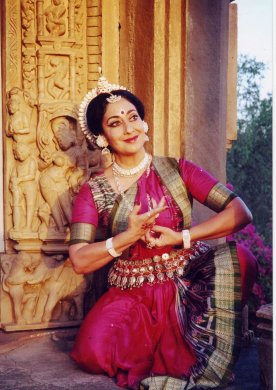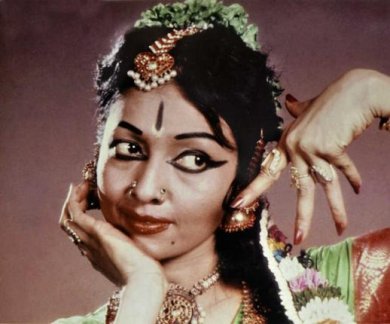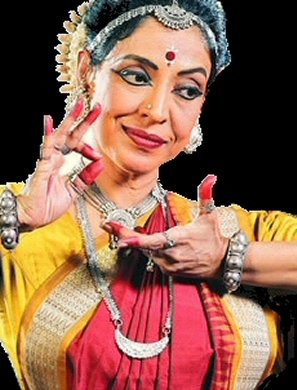
|
 |

|
 |
Guru-Shishya Parampara: Then vs. Now - Madhur Gupta e-mail: madhurgupta04@gmail.com May 25, 2019 There have always been profound discussions on the difference between a teacher and a guru. It's often said that a teacher teaches skills but a guru imparts knowledge of how to efficiently use those. Guru-Shishya parampara where the relationship between a student and his teacher extends beyond the realm of gaining knowledge and delves into a deep seated personal equation, has always been an integral part of the Indian education system. This tradition though now diluted, is still followed by Indian classical dancers and musicians where the guru creates a talented artiste out of the student and also tries to ensure that the student retains the necessary humility to go beyond greatness. The tradition of classical dance and music is an ever flowing river. An individual is but a tributary of this greatness. I met some of the revered gurus of today and delved into their own journeys as a student and now that of a guru.  Sharon Lowen, a guru who still believes in retaining the essence of Guru-Shishya parampara, rarely takes on more than a couple of students who show exceptional grit and determination for her classes. She is a firm supporter of one-on-one mentorship and thinks the guru's undivided attention is what can really shape good artistes out of her students. Herself being touched by the generous virtuosity of her guru, Odissi happened to her by serendipity. She recalls, "At a workshop in Triveni, conducted by Guru Kelucharan Mohapatra, I was completely mesmerized by the dance form. When I expressed my desire to learn this style of dance, I was granted permission to attend the three-month workshop on Odissi dance as I was the only student in the Manipuri dance class." She maintains that gurus should have personal equations with their students and states, "Without the benefits of learning under a parental like mentoring master teacher, the prospect of thoroughly trained performing artistes that can captivate the audience in solo recitals for a full evening performance become less likely and this vast population of fledgling young artistes would soon disappear without developing into a middle level range of professional artistes."  Yamini Krishnamurthy nostalgically retraced more than six decades of her dance career. She ruminated, "My first love was Bharatanatyam but then Kuchipudi happened to me by sheer accident. One day in the early 60's, an elderly gentleman came to my house in a rickshaw and called out my name. When I asked who he was, he told me he was Vedantam, a Kuchipudi dance teacher and he wanted me to learn his art for I too was an Andhra girl." Her eyes sparkled when she recalled how whenever her guru danced an item called Dashavatar, she would often be dumbstruck for she wondered how such an old man could dance so beautifully. Yamini Krishnamurthy fondly talked about her father as her guru and how he played a crucial part in making her a dancer. "My father used to sell off our properties, our orchards, our houses just to pay teachers like Pankaj Charan Das and many more who came from various part of India to teach me. This kind of crazy determination made me a dancer and nothing else." Speaking about her own students, she commented that though there have been many talented students who have done arangetrams under her, most of them settled down with plum jobs in IBM and Microsoft and made dance a part time passion. But she also proudly talked about her students like Rama Vaidyanathan and few more who are the rage of the current dance world.  Madhavi Mudgal grew reminiscent when asked about her student days. She quoted, "First you need immense talent to be great in any field be it dance, music or even astrophysics! Then what is required is the right guru which I was stupendously fortunate to have got in Kelubabu (Guru Kelucharan Mohapatra). I think he was the most generous person in terms of art I could have ever met." "From hundreds of students, only a few gems sprout up and as a guru my responsibility is to teach them well and let them blossom with their own artistic sensibilities," said Mudgal when asked about the contemporary trends of Student-Guru mentorship. She finished by stating that everyone who learns dance does not do so to end up on stage as a performer. Arts elevate the mental status of a person. They become culturally enriched, can appreciate arts better and spread it too. By and large, the gurus ended up agreeing that Guru-Shishya parampara has been marred time and again by the effects of swanky high ended institutions where one can pay money and get the knowledge worth the fee one paid, but the parampara will never die for there always will be a handful of serious students who understand the gravitas of how important it is to learn under a guru who is not just a teacher but a guide, mentor and foster parent too! (Edited excerpts from interviews conducted around 2015-16, New Delhi) Odissi dancer Madhur Gupta is a disciple of Guru Sharon Lowen. He contributes to national dailies like The Hindu, The Times of India, The Asian Age, The Indian Express covering at large the Indian classical dance and music scene of the subcontinent. Post your comments Please provide your name and email id when you use the Anonymous profile in the blog to post a comment. All appropriate comments posted with name & email id in the blog will also be featured in the site. |